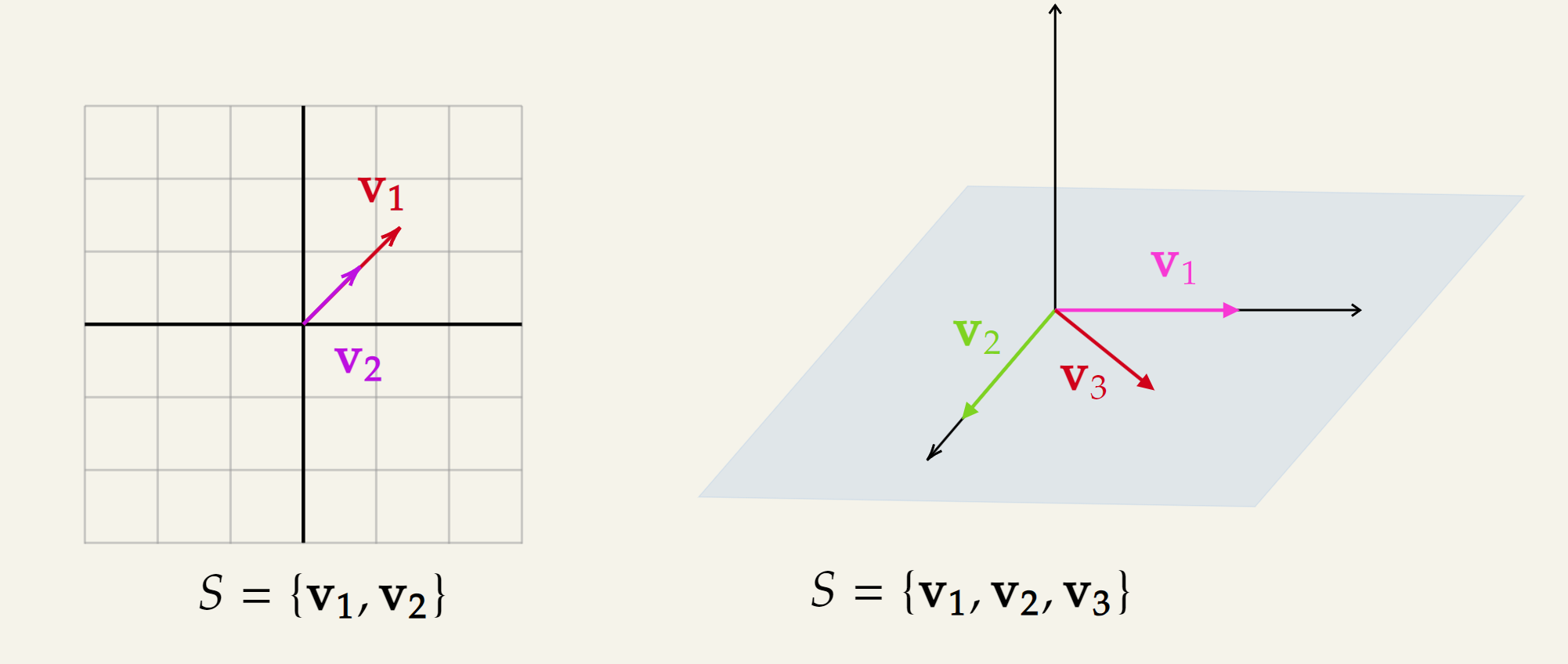First Definition
A set of vectors is linearly independent if the following is true:
To interpret this we just need to think about a counter-example. Consider a set of vectors and another set of vectors from . Now if the linear combination of the first set of vectors is in direction opposition to the linear combination of vectors of the second set, the summation would result in . That would mean there is a linear dependence. In what scenario there wouldn’t be a linear dependence? If no vector (linear combination of vectors) from can be expressed as a linear combination of any other vector/vectors.
Example in :
For a concrete example, let’s restrict ourselves to and consider only three vectors i.e. .
Case 1: Consider and ,
This means and are colinear or in other words lies along the same line. Furthermore, this implies, they are linearly dependent.
Case 2: Consider and ,
In this case, and are colinear and linearly dependent.
Case 3: Consider and ,
In this case, and are colinear and linearly dependent.
Case 4 : Out of only one is non-zero and remaining two are zero.
In this case, it is not possible to get a zero vector (without the trivial case).
Case 5: Consider .
This implies one of the vectors can be written as a linear combination of the other two vectors i.e. there exists a linear dependence among the vectors.
This means the only way all three vectors will be linearly independent is . Only in that case, and all the vectors are linearly independent.
General Version: Consider , we can write the following:
Dividing by ,
This implies can be written as the linear combination of other vectors i.e. the set of vectors is linearly dependent.
Second Definition
Another definition that relates linear independence to the concept of Span is mentioned below. For any vector the following needs to hold true:
We can form the definition for linear dependence as follows. For any vector if the following is true:
This would mean there is a linear dependence between the vectors in . The following visualization shows two such cases, where the set contains linearly dependent vectors.

References
- Bernstein, Matthew. Span and Linear Independence. 11 June 2022, mbernste.github.io/posts/linear_independence/.
- Gundersen. Linear Independence, Basis, and the Gram–Schmidt Algorithm. gregorygundersen.com/blog/2021/04/24/linear-independence/.